Carmakers are increasingly looking into ways of reducing the environmental impact of their vehicle manufacture – and one way to do this is by using more recycled materials in their cars. But how can they go about this?
While environmental regulations for the automotive industry have traditionally focused on the fuel efficiency of vehicles and the greenhouse gasses they emit, the true impact that vehicles have on the planet can only be gauged by considering their entire life cycles, encompassing everything from their production and use to what happens to them at the end of their working lives.
Both governmental regulation, and pressure from consumers and charities, are driving carmakers to look into ways of reducing the impact that the manufacture of their vehicles has on the environment.
Consultancy McKinsey estimates that, by 2040, 60% of carbon dioxide (CO2) emissions generated by the automotive industry will come from the materials it uses—unless it takes further action to improve the sustainability of its manufacturing operations. As such, while they continue to look for ways to make their vehicles more efficient and less polluting while they are being driven, carmakers are also looking to reduce CO2 emissions created by their supply chains, and to increase the material that is recycled when their vehicles reach the end of their lives. One way that they can achieve these aims is, in the first instance, to use more recycled materials in their cars.
Yet this is no easy task. While recycling has become relatively common in other industries, the quality and safety requirements of the automotive industry can preclude its use of recycled materials.
Ambitious targets
This has not stopped carmakers from announcing ambitious sustainability targets. Jaguar Land Rover (JLR) has committed to reducing greenhouse gas emissions from its value chains by 54% as part of its plan to operate on a net-zero basis by 2039. BMW, meanwhile, plans to reduce CO2 emissions over the life cycle of all of its products by more than 40% by 2030. This is driving the German carmaker to use more secondary materials and to intensify its efforts to research and develop sustainable materials. Indeed, BMW has introduced a “secondary first” principle, where its suppliers must justify – on cost or quality grounds – the use of virgin materials over recycled.
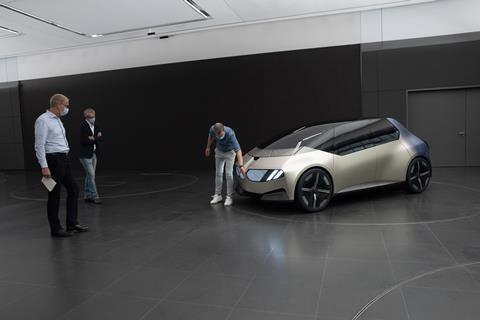
Both OEMs see the interiors of their vehicles as good places to employ more recycled materials, and both are starting to use a polyamide (PA) yarn made from waste for the production of carpets and trims. Aquafil, of Arco, Italy, has developed a chemical/mechanical process that allows it to regenerate PA 6 waste – including industrial plastic, fabric offcuts from clothing manufacturers, fishing nets from the farming industry, and those abandoned in the ocean – indefinitely to produce its Econyl yarn.
The first Econyl Regeneration System was built at Aquafil’s plant in Ljubljana, Slovenia. Started-up in May 2011, this now lays claim to being the world’s most efficient industrial system for the production of PA 6 from solely regenerated materials using a closed-loop process. The company has also established an international network for the collection of materials and a logistics chain to transport them to the production plant.
In a single year, the company says that it recycles as much as 40,000 tonnes of waste and that its recycling process reduces the global warming impact of the production of PA by 90% compared with the production of the thermoplastic from oil. For every 10,000 tonnes of Econyl raw material produced, 70,000 barrels of crude oil are saved, and 65,100 tonnes of carbon dioxide equivalent emissions are avoided.
The resulting Econyl PA demonstrates the same chemical and mechanical characteristics as the virgin polymer, allowing it to be converted into a fibre for carpets and textiles.
The ultimate goal for carmakers is to create closed-loop systems, where materials and components from their production scrap and old vehicles are recycled or repurposed for the production of new parts and vehicles.

Circular economy
In October 2022, Stellantis unveiled a plan for a business unit dedicated to this so-called circular economy. The parent company of OEMs, including Fiat, Jeep, Dodge, Maserati and Peugeot, estimates that the new unit will bring in more than €2 billion in revenue by 2030 and help it to hit its target of operating on a carbon net-zero basis by 2038.
The new unit will focus on designing cars for a circular economy and will rely on the so-called 4R strategy—remanufacture, repair, reuse, recycle. At a press briefing given at the time, the senior vice president of Stellantis’ global circular economy unit, Alison Jones, said that a circular economy for automotive parts starts at the point of design, where, for any product or service, engineers ask themselves: “How do I design it so that it lasts as long as possible, either through durability of materials or refreshing?”
In a circular economy, the end of a part’s working life is anticipated, meaning is designed to from the outset to be recycled.
The creation of closed-loop recycling systems presents a number of problems, especially when it comes to the question of what to do with end-of-life vehicles. These challenges could be solved by using innovative technologies and, as Stellantis’ Jones suggests, by re-thinking the vehicle-design process.
Take aluminium. Methods for the creation of a closed-loop system for the recycling and re-use of aluminium production scrap are relatively well-established. JLR, for instance, has made significant progress in this area. Between September 2013 and March 2020, it used around 360,000 tonnes of closed-loop scrap to manufacture aluminium parts for all of its vehicles. Ford also uses a closed-loop system to manufacture its F-series trucks and claims to be the largest closed-loop aluminium recycling automaker in the world. Audi, BMW and Volvo have each implemented similar systems in the last three years.
The development of commercially viable processes for the recycling of aluminium from end-of-life vehicles represents a different, and significant, challenge. Recyclers receive cars in the form of crushed cubes, which they shred. The resulting detritus is then sorted using magnets and other techniques to separate families of materials from one another. Polestar Circular Lead, Sander Jahilo, says: “The car industry is a well-established source of metals for the recycling industry. However, only a small share of that material finds its way back to the car industry, as most of it is downcycled into lower-grade metals.”
This is because cars contain different grades of aluminium, each with specific attributes. Recycling plants cannot distinguish between these grades and treat them as one material, producing aluminium that is no longer suitable for high-grade applications. Through the development of its Polestar O2 concept car, Polestar believes that it has developed an elegant solution to this problem; labelled aluminium. Jahilo says: “Labelling and colour-coding enables the recyclers to separate the different grades to recycle them individually, avoiding contamination of different grades. This, in turn, leads to a closed material loop in which aluminium is recycled back to its original quality.”
Plastic recycling
The mixing of materials presents a similar issue for the recycling of plastic parts. End-of-life textiles, for instance, often comprise blends of synthetic and natural materials, which can make their recycling unecological, uneconomical or technologically unfeasible. Suppliers of these materials are responding accordingly. Autoneum, of Winterthur, Switzerland, for instance, has developed multi-layered tufted and needlepunched carpet systems made entirely from polyester (PES), making them easier to recycle than multimaterial systems.
The company says that its carpets could prove particularly useful as the automotive industry transitions to manufacture more electric vehicles (EVs). While the interiors of end-of-life vehicles with internal combustion engines are usually shredded together with the rest of the body, making the reclamation of textile products such as carpets practically impossible, end-of-life EVs are often treated differently. Since their batteries have to be removed in order to be recycled or disposed of properly, Autoneum says that demand for easy-to-dismantle products, especially carpets, for the interior of EVs is increasing. Such easily removable components not only facilitate access to the battery, but they can also be recycled individually.
The carpets are based on Autoneum’s existing technologies; the surface of the carpets, for example, can be made of the tufted nonwoven, Di-Light, while Hybrid-Acoustics PET can be used for the decoupler layer.

The company claims that Di-Light is more resilient and lighter in weight than its rivals. One of the most frequently made observations concerning needlepunched automotive carpets is that they are not as durable and abrasion-resistant as tufted carpets. However, for a given weight, Di-Light offers a higher abrasion-resistance compared with previous carpets, while providing a homogeneous appearance and texture. These improvements result from Autoneum’s development of specialised polyethylene terephthalate (PET) fibres. Moreover, depending on the specific product, Di-Light carpets can consist of up to 97% recycled PET, reducing the impact of their manufacture on the environment.
Lightweight and porous, Hybrid Acoustics materials are based on nonwoven felts or combinations of such felts and foams. By controlling the properties of the felt, Autoneum says it is possible to tailor parts to give different acoustic properties appropriate to their location. The company recently introduced a version of the material (Hybrid Acoustics PET) containing a significant proportion (up to 50%) of recycled fibres – cotton or PET. Autoneum says that parts made from Hybrid-Acoustics PET are recyclable and, when compared with conventional acoustic insulators, are up to 40% lighter in weight.
Autoneum is currently developing a PES carpet system for an EV that will be available in Europe and Asia from a German OEM.
Mixed plastic waste from end-of-life vehicles could even one day even be converted into the high-value nanomaterial, graphene, according to researchers at Ford and Rice University.
Flash Joule heating
The average sports utility vehicle (SUV) contains up to 350 kg of plastic that could sit in a landfill for centuries. Using a process called flash Joule heating developed at Rice University, in Houston, Texas, this waste can be transformed into graphene. This graphene can, in turn, be used to make an enhanced polyurethane (PU) foam for use in the interiors of new vehicles.

Ford has been using up to 27 kg (60 pounds) of PU foam in its vehicles, with about 0.9 kg (2 pounds) of that being graphene-reinforced, since 2018. Graphene clearly has a future at Ford. The company first introduced it into a variety of other under-the-bonnet components and in 2020 added a graphene-reinforced engine cover. The company expects to use it to reinforce hard plastics as well.
Tests show that the graphene (0.1% by weight)-infused foam demonstrates a 34% increase in tensile strength and a 25% increase in low-frequency noise absorption compared with conventional PU foam. This foam can also be converted into graphene. The lead researcher on the project, James Tour, says that he was sent 4.5 kg (10 pounds) of mixed plastic waste from a vehicle shredding facility by Ford.
He continues: “It was muddy and wet. We flashed it, we sent the graphene back to Ford, they put it into new foam composites, and it did everything it was supposed to do. Then they sent us the new composites and we flashed those and turned them back into graphene. It is a great example of circular recycling.”
Using flash Joule heating, carbon-containing materials are heated to 3000 K for just 10 ms. Prime source materials include food waste, plastic waste, petroleum coke, coal, wood chippings and biochar. To test whether end-of-life, mixed plastic could be transformed into graphene, the Rice researchers ground the shredder fluff made of plastic bumpers, gaskets, carpets, mats, seating and door casings from end-of-life F-150 pickup trucks to a fine powder without washing or pre-sorting the components. They then flashed the powder in two steps, first under low current and then high current in a heater custom-designed for the experiment.
Powder heated between 10 to 16 seconds in low current produced a highly carbonised plastic accounting for about 30% of the initial bulk. The other 70% was outgassed or recovered as hydrocarbon-rich waxes and oils that could also be recycled.
The carbonised plastic was then subjected to high-current flashing, converting 85% of it into graphene while outgassing hydrogen, oxygen, chlorine, silicon and trace metal impurities.
The automotive industry must use more recycled materials for the production of its vehicles if it is to meet its own environmental targets. This endeavour will not be without its challenges, but as we have seen, with innovative technologies and fresh thinking, these problems will not be insurmountable.






























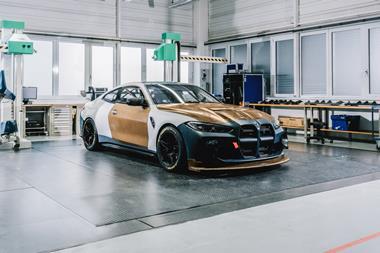
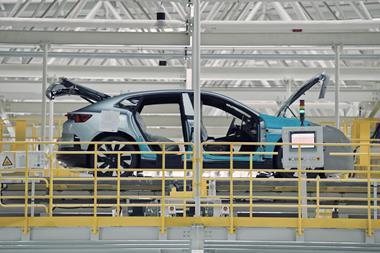

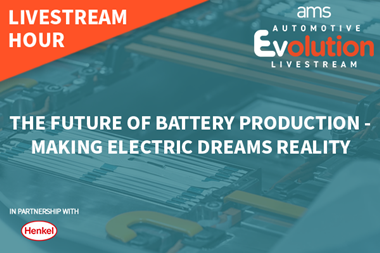

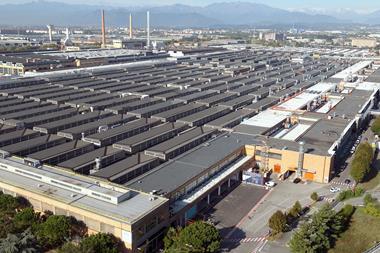



No comments yet